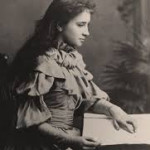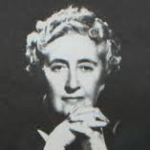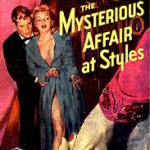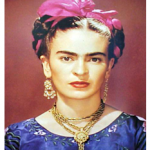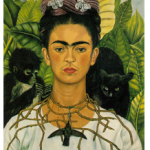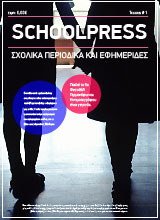By Louise Charalampopoulou, Semina Solomou and Veronika Pefani
The American Maya Angelou has dabbled in poetry, song, prose, activism and has been a university professor. She has received many awards and honors for her works (poems, plays, films, television programs). Her most important and recognized works are the seven biographies she made on the theme of her childhood and her early years as an adult.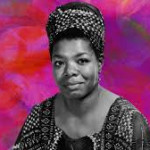
Her maiden name was Marguerite Johnson and she was born on April 4th 1928 in St. Louis, Missouri. Her mother was called Vivian and she was a nurse, her father was called Bailey and he was a nutritionist and she also had an older brother whose name was Bailey Jr. Her name, Maya, was created by her brother and it was deprived of the word “My” or “Mya sister”
Her childhood was really difficult especially after the breakup of her parents. She and her brother were at the age of 3 and 4 when their parents decided to send them to their grandma. There the situation was much better given that their grandma had financial comfort in contrast with other African Americans. After four years they came back and her mother married another man, Freeman, who tried to rape her at the age of 8. After she told it to her family, the man was found dead, probably from her uncles. This was too much for her! She was thinking that his death was her fault and that it was wrong telling it to someone. As she has said she believed that her voice killed him and after this event she stopped talking for 5 years. While she was going through this, she discovered her love of literature, books and poetry.
After this tragic experience she moved again to her grandma with her brother. There she met a lot of important writers like Shakespeare, Edgar Allan Poe, Douglas Johnson, James Weldon Johnson and others who influenced her. These people played a role of major importance in her life. When she turned 14, she moved for one more time to her mother, in California but this time for good.
During the second World War she studied in the Labor School in California. Three weeks after her graduation she got pregnant at the age of 17. She named her son Clyde but, in the future, he decided to change his name to Guy Johnson.
After marrying Tosh Angelos and receiving his last name, Maya started her dancing career. She then moved to the Big Apple to study African dance, but 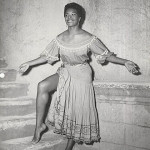 returned to California soon after. By the time she was divorced in 1954 she managed to dance professionally in clubs and she changed her professional name to «Maya Angelou» since it was unique. Furthermore, Angelou toured Europe and learned the language of every country she visited really well. In 1957, she recorded her first album. In 1959, she relocated to New York and became a member of the Harlem Writers Guild and her work was printed for the first time. In 1960, after encountering civil liberties leader Martin Luther King Jr. and hearing his speech, she organized the Cabaret for Freedom to aid the Southern Christian Leadership Conference, making her a civil rights advocate.
returned to California soon after. By the time she was divorced in 1954 she managed to dance professionally in clubs and she changed her professional name to «Maya Angelou» since it was unique. Furthermore, Angelou toured Europe and learned the language of every country she visited really well. In 1957, she recorded her first album. In 1959, she relocated to New York and became a member of the Harlem Writers Guild and her work was printed for the first time. In 1960, after encountering civil liberties leader Martin Luther King Jr. and hearing his speech, she organized the Cabaret for Freedom to aid the Southern Christian Leadership Conference, making her a civil rights advocate.
In 1961, after meeting Vusumzi Make, he moved with them to Cairo. After breaking up, in 1962, she and Guy moved to Accra, Ghana until 1965. During that time, she became an administrator at the University of Ghana, an editor and writer for multiple foreign publications, and close friends with Malcolm X. When he was assassinated, she moved to Hawaii, after staying in the U.S. to help build the Organization of Afro-American Unity, but she returned to New York and Martin Luther King Jr. asked her to organize a march. After 2 years she was the first Black woman to produce a screenplay. She married Paul du Feu in 1973, while being nominated for a Tony Award and being given many awards. However, they separated in 1981, when she received the lifetime Reynolds Professorship of American Studies at Wake Forest University for a variety of lessons.
In 1993, Angelou recited her poem «On the Pulse of Morning» at the presidential inauguration of Bill Clinton, whose recording won a Grammy Award. In June 1995, she performed «A Brave and Startling Truth» which commemorated the 50th anniversary of the United Nations. She, also, played in movies and directed a feature film, “Down in the Delta”. In 2011, Angelou was given the Presidential Medal of Freedom. In addition, she donated her personal papers and career memorabilia and served as an advisor for Martin Luther King, Jr. Memorial. Angelou passed away on May 28, 2014, in Winston-Salem. In 2022, Angelou became the very first Black woman to be featured on an American coin.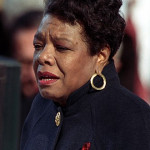
Maya Angelou has written 7 autobiographies. She began writing books at the beginning of World War II and stopped with the assassination of Martin Luther King. A year before her death, aged 85, her last autobiography, «Mom& Me & Mom «, was published. In 1969 her play: «I Know Why the Caged Bird Sings» was released. From 1944 to 1948 she wrote «Gather Together in My Name», which was released in 1974. The very next year she began writing «Singin” and Swingin” and Gettin” Merry Like Christmas», which was finished six years later (1955). «The Heart of a Woman» was published in 1981 and was written between 1957 and 1962. In 1962 – 1965 she composed «All God’s Children Need Traveling Shoes» and a year later and within three years he wrote «A Song Flung Up to Heaven» released in 2002.
Critics classify Angelou’s works as autobiographical novels because of specific narrative techniques such as dialogue, development of theme, setting, plot, and language. She expands the subject, criticizes, makes changes and thus questions the common structure of the autobiography. Her autobiographies are written by a single author, her, and they follow chronological order, and include the elements of character and subject, according to Mary Jane Lupton. Many experts such as Lupton, the African-American Crispin Sartwell and Lyman B. Hagen argue that Maya Angelou does not conform to the standards of autobiographical writing but creates her own form of it. 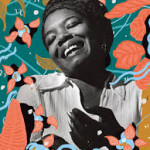
To sum up, Maya Angelou was a great personality who has left her mark with her poems, autobiographies, films, television programs in many fields. It is worth remembering her, honoring her and recognizing her value and her work!
Sources:
https://en.m.wikipedia.org/wiki/Maya_Angelou
https://www.poetryfoundation.org/poets/maya-angelou

